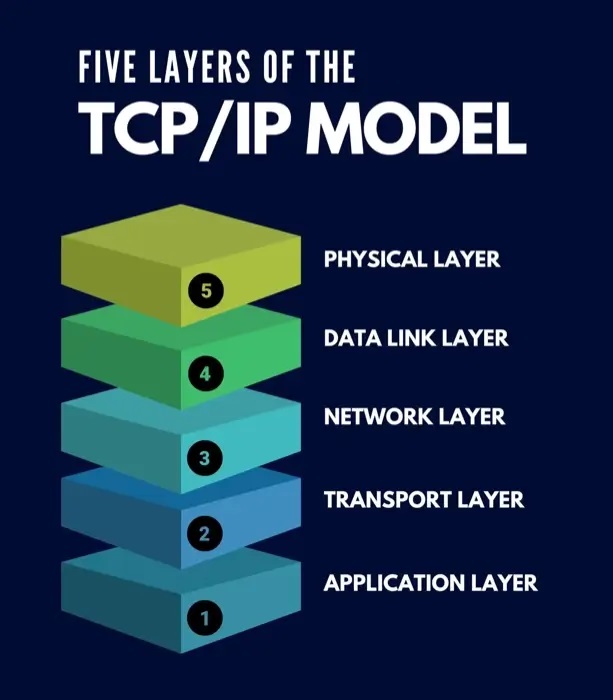Introduction to TCP/IP
Welcome to the fascinating world of TCP/IP! This protocol suite is the backbone of the internet and an essential component of modern networking. Whether you’re a student, a budding IT professional, or just a curious learner, understanding TCP/IP is crucial in the digital era. In this comprehensive guide, we’ll explore every aspect of TCP/IP, making it easy and enjoyable for beginners.
Understanding the Basics
What is TCP/IP?
TCP/IP, or Transmission Control Protocol/Internet Protocol, is the set of rules governing the way devices on the internet communicate. It’s a two-layer program where TCP manages the assembling of a message or file into smaller packets, and IP handles the address part of each packet so it gets to the correct destination.
History and Evolution of TCP/IP
Developed during the 1970s as part of a project sponsored by the US Department of Defense, TCP/IP was designed to ensure and maintain communications in the event of disruptions or network failures. Over time, it has evolved to become the standard protocol for the internet and has revolutionized the way we communicate and share information.
Core Components
The TCP Protocol
TCP, or Transmission Control Protocol, is responsible for ensuring the reliable transmission of data over the internet. It breaks down messages into smaller packets, sends them to the destination, and then reassembles them back into the original message.
The IP Protocol
IP, or Internet Protocol, is the method by which data is sent from one computer to another on the internet. Each computer (known as a host) on the internet has at least one IP address that uniquely identifies it from all other computers on the internet.
How TCP/IP Works
Data Transmission Process
When you send or receive data (for example, an email or a web page), the message gets divided into little chunks called packets. TCP/IP protocols determine how these packets are structured and how they navigate through the network.
IP Addressing and Routing
An IP address is a unique set of numbers separated by periods that identifies each computer using the TCP/IP protocol to communicate over a network. Routing is the process of finding a path over which data can be sent from the sender to the receiver.
TCP/IP in Action
Real-World Applications
TCP/IP is not just a standard; it’s a practical protocol used in countless applications. From browsing the internet on a browser, checking your email, to streaming videos, TCP/IP is at the heart of these everyday activities.
Case Studies
Consider a scenario where you’re sending an email or accessing a website. The data travels through a series of routers and networks, using TCP/IP protocols to ensure it reaches its intended destination accurately and efficiently.
Setting Up TCP/IP
Configuring Network Settings
Setting up TCP/IP on your computer usually involves configuring the IP address, subnet mask, gateway, and DNS server. This setup is crucial for your device to communicate effectively on a network.
Troubleshooting Common Issues
Network issues can often be traced back to TCP/IP configurations. Understanding how to troubleshoot common problems like IP address conflicts or DNS issues is an invaluable skill.
Advanced Concepts
Subnetting and CIDR
Subnetting is the practice of dividing a network into two or more networks. Classless Inter-Domain Routing (CIDR) is a method for allocating IP addresses and routing Internet Protocol packets.
IPv4 vs IPv6
IPv4 is the fourth version of IP and is widely used. However, due to the limited number of addresses, IPv6 was developed, offering a much larger address space, among other benefits.
Security in TCP/IP
Potential Vulnerabilities
While TCP/IP is robust, it’s not immune to security threats. Issues like IP spoofing, where an attacker disguises as a trusted host to steal data, are common vulnerabilities.
Best Practices for Security
To secure your TCP/IP networks, implementing firewalls, using secure protocols like HTTPS, and regularly updating software and hardware components are critical practices.
The Future of TCP/IP
Emerging Trends
The future of TCP/IP is intertwined with the growth of the internet. With emerging trends like the Internet of Things (IoT) and increasing demand for faster and more secure internet, TCP/IP continues to evolve.
TCP/IP in the Age of IoT
In the age of IoT, where billions of devices are connected, TCP/IP’s role in managing these connections efficiently and securely is more crucial than ever.
Conclusion
TCP/IP is more than just a set of protocols; it’s the language that powers the internet. From its humble beginnings to its current state as the backbone of digital communication, understanding TCP/IP is key to navigating the world of networking. As you embark on your journey in understanding TCP/IP, remember that it’s a continuous learning process, ripe with opportunities for innovation and growth.

